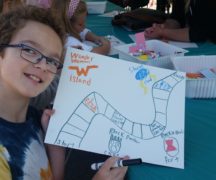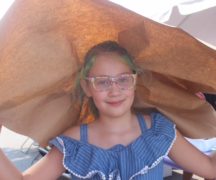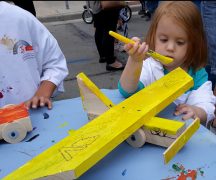By JULIE CARLE
BG Independent News
The Kiwanis Youth Arts Village at the Black Swamp Arts Festival is a prime learning spot for discovery.
Children explore the colors, textures and forms associated with creating art, and adults rediscover the joy of making art like a kid.
Another group, students from the Bowling Green State University Chapman Learning Community gain active, hands-on leadership and problem-solving experience as the volunteers for the tie-dye activity.
Brandi Barhite and her six-year-old son Lincoln were among the early visitors on Saturday. Lincoln was already heavy into the glue as he worked to make a tree out of wooden pieces and twigs. The youth art is by far his favorite part of the festival and their first stop year after year, Barhite said.
Jaiden and Jack Sandwisch were intent on their wooden creations. Jaiden proudly showed off his architectural masterpiece, a garage with open doors and a stick roof. Jack was focused on making his sculpture as tall as possible, an interesting feat for slow-drying Elmer’s glue and the number of pieces he was adding.
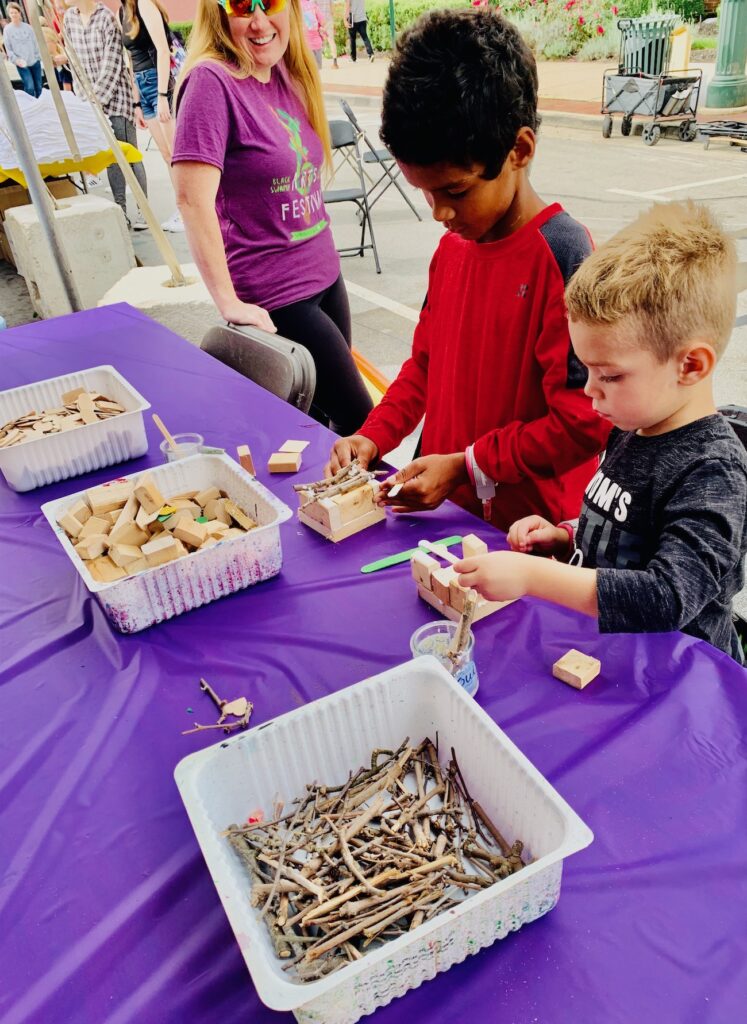
Mom Melody Sandwisch stood by with a smile as she watched the creative process unfold. A Bowling Green native, she enjoys sharing the artful environment with her children. “We had come when we were fostering them, before we adopted them, and they remember making the hats,” she said. They told her this year they wanted to “go for the memories” of making the hats again.
Kathleen Reinemeyer watched in awe as Vivian, 7, and Bowie, 4, put the decorative touches on their paper hats. “I’m not sure where they get their ideas, but it’s fun to see them come up with their own designs,” she said.
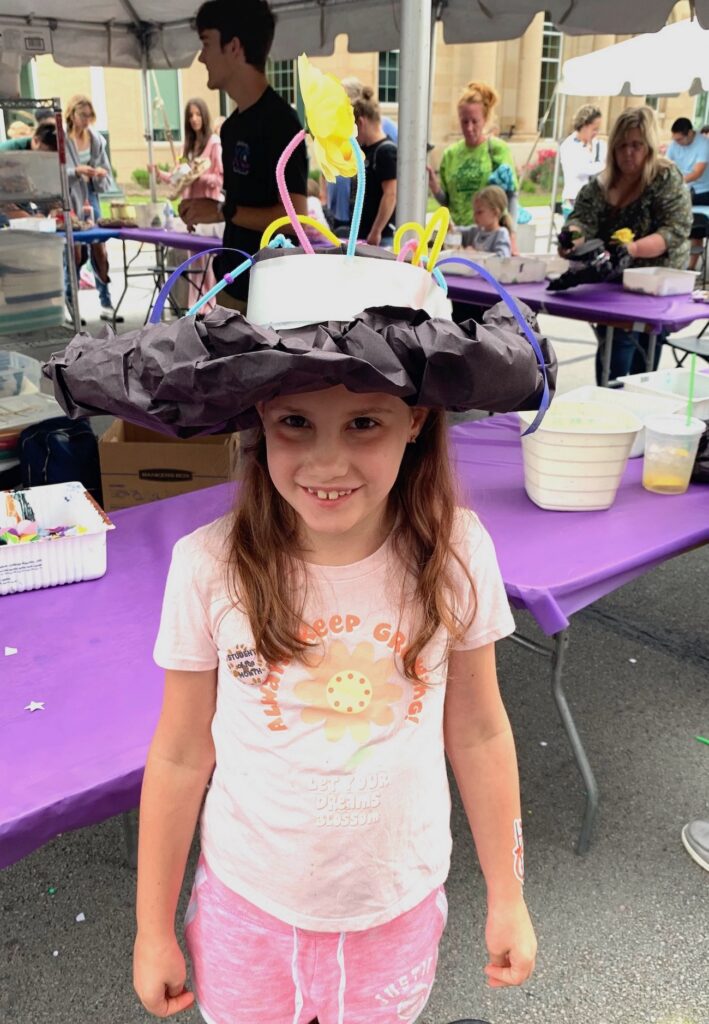
Vivian was adding every type of flower she could to the stylish black hat. She chose to make a tall pipe cleaner stem to make the yellow flower the centerpiece of her chapeau.
Bowie, who said he likes decorating his hat, chose brown paper, lots of foam shapes and a handful of pipe cleaners for his hat, though mom made him save some of the pipe cleaners for other young artists.
Quentin Auchmudy-Miller waited patiently for directions from a Chapman Learning Community student before carefully choosing the colors of choice for his tie-dye T-shirt.
For many years, Chapman students have volunteered for the tie-dye activity tent, according to Brett Holden, director of the Chapman Learning Community. This year, 35 students helped set up and run the activity for Saturday and Sunday of the arts festival.
Helping at the festival fits in perfectly with the mission of the learning community, he explained. Established in 1997, Chapman is designed to teach students how to collaboratively work with local and regional nonprofit agencies to help those in need. Service and leadership are the tenets of living in the community.
The tie-dye tent at the arts festival is one of the first leadership learning opportunities for the students each fall. Because the tie-dye operation is one of the more involved activities in the youth art area, Holden has allowed the learning community to be the consistent service group to handle the process.
The youth arts committee provides all of the supplies, but the students are the ones who arrive early on Saturday to organize the dyes, stack the T-shirts according to sizes, set up each step of the process and prepare to interact with hundreds of kids, their parents and other adults each day.
The first-year students learn from the experienced students who are gaining leadership skills as the mentors for the new students.
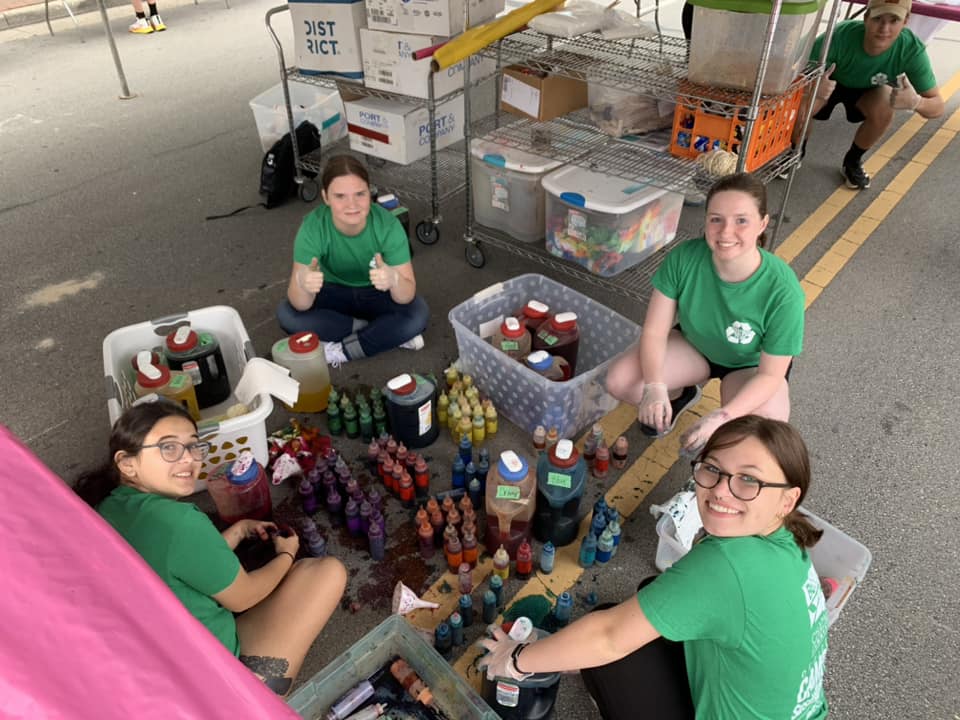
Averi Glick, graduate assistant for the learning community and a Master of Public Administration student, helped Holden plan and manage the youth arts service project. “It’s been fun to be a part of the festival from this side,” she said. She has attended the festival in previous years, but as a spectator, not as a volunteer.
“Helping manage the Chapman students is good, but seeing the kids’ enjoyment is even better,” she said.
“Everyone is expected to help as part of our family,” Holden said. “Our students represent a variety of majors from nursing and business to social work and education. They will all be expected to work collaboratively to solve social challenges. This is a great way for them to learn some of those leadership skills and the value of service to others.”


